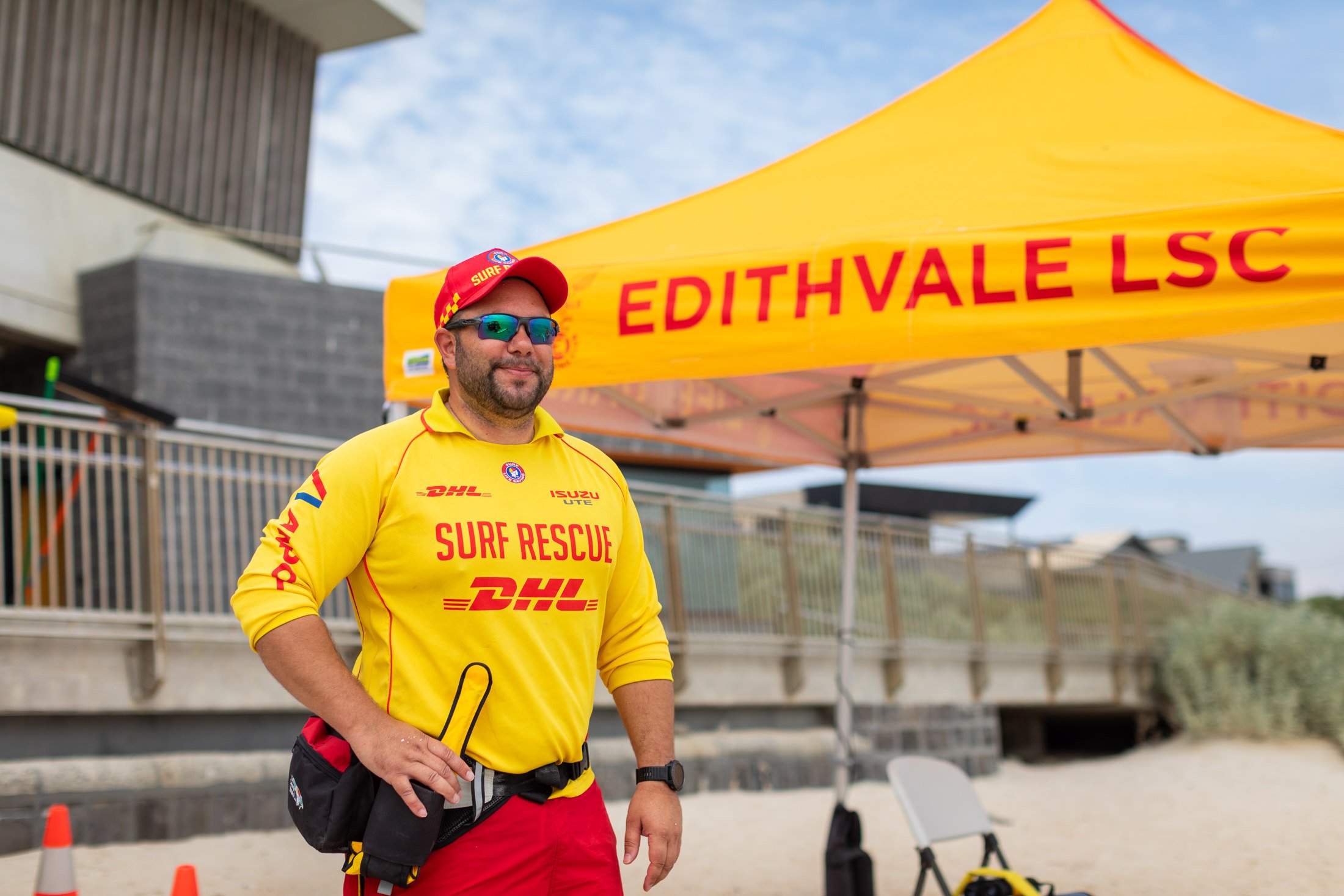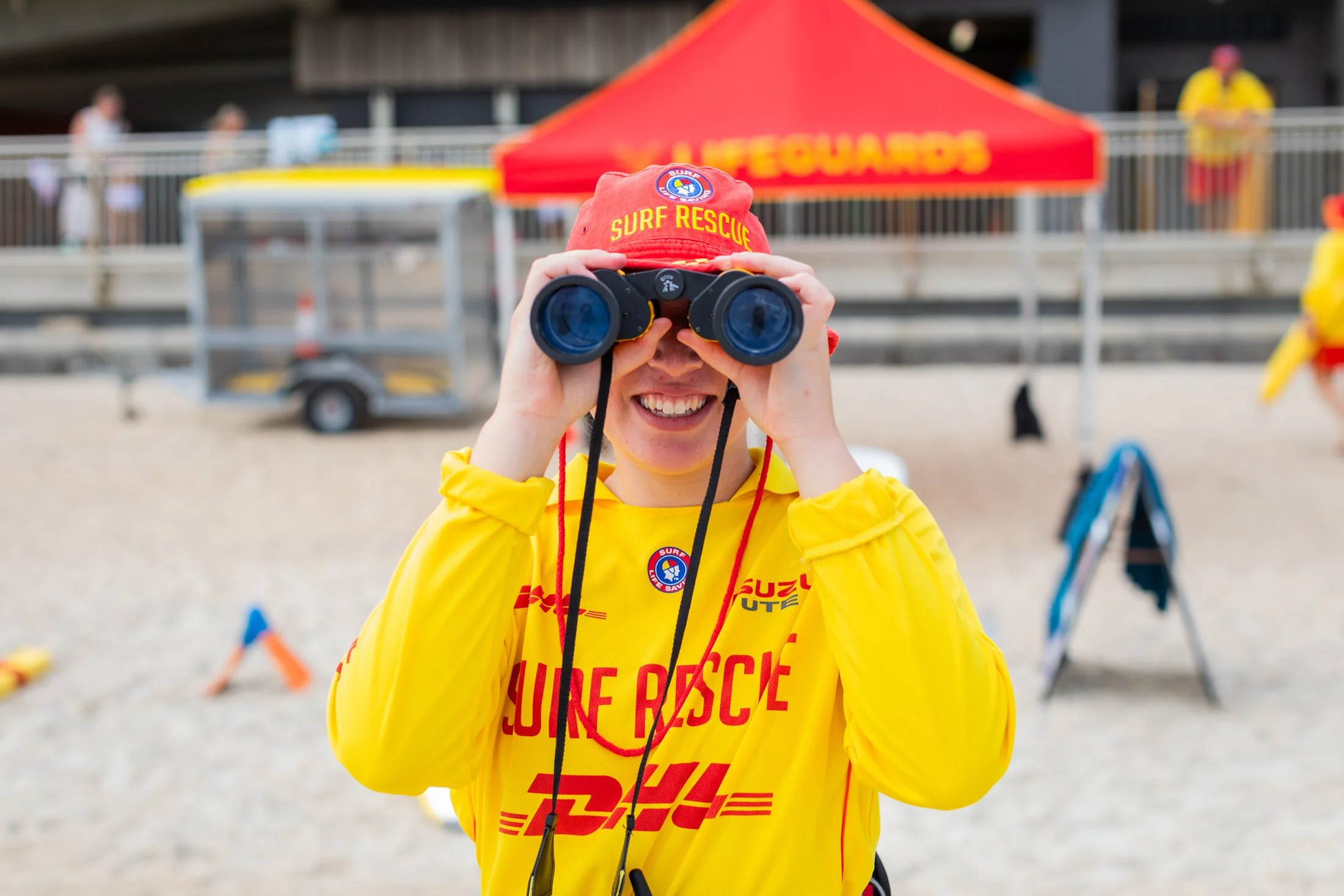
What does it take to become an ELSC lifesaver?
All courses and training are offered through the club under the direction of the Chief Instructor. The minimum age to become an active lifesaver is 13 years of age. The two main lifesaving awards are:
Surf Rescue Certificate
The SRC qualification involves training in surf awareness, surf skills, surf rescue techniques, first aid, and resuscitation. Following successful completion of the course, you will be qualified to participate in patrol duties under the supervision of a Bronze Medallion holder. You must be a minimum of 13 years of age on the date of the final assessment. The assessment includes:
Signals – 10 correct
100m run – 100m swim – 100m run (8 minutes or less)
Board or tube rescue (flippers optional)
A patient assessment on a live patient and demonstration of lateral position
One and two person CPR on a manikin (adult, child or infant) including oxygen-supplemented CPR
Theory assessment paper
Lifesaving Bronze Medallion
The Bronze medallion involves training in surf awareness, surf skills, surf rescue techniques, first aid and resuscitation. Following successful completion of the course, you will be qualified to participate in patrol duties. You must be a minimum of 15 years of age on the date of the final assessment. The assessment includes:
Signals – 10 correct
200m run – 200m swim – 200m run (8 minutes or less)
Board and tube rescue (flippers optional)
A patient assessment on a live patient and demonstration of lateral position
One and two person CPR on a manikin (adult, child or infant) including oxygen-supplemented CPR
Theory assessment paper
Once qualified you’ll join the patrol team, which is made up of a great bunch of ELSC members each with qualifications ranging from IRB driver/crew, Bronze Medallion, Surf Rescue Certificate, Radio Operator, Senior First Aid and Advanced Resuscitation.
Once you have your Bronze, you may want build on your skills in lifesaving, in which case there are further courses which can be completed, including:
Radio Certificate (duration approximately 3 hours)
Prerequisite: Minimum 14 years old
Advanced Resuscitation Techniques
Prerequisite: Minimum 15 years old and Senior First Aid Certificate
IRB Crew
Prerequisite: Bronze Medallion
IRB Driver
Prerequisite: Minimum 17 years old, Bronze medallion, IRB Crew and Victorian Boat Licence.
Advanced Resuscitation Techniques (HLTAID015 Provide Advanced Resuscitation and Oxygen therapy)
Prerequisite: Minimum 15 years old and HLTAID011 Provide First Aid Certificate.
Attend Face to Face training and exam as well as online theory.
SSV (Side by Side Vehicle Award)
Prerequisites Min Age 18 and hold a Victorian Drivers licence (Red or Green P plates accepted)
Attend Face to Face training and exam as well as online theory.
BRONZE MEDALLION TRAINING DATES ANNOUNCED 2025-26
We need more Local Heroes to get their Bronze Medallion and help keep Edithvale Beach safe this summer.
About the Course:
The Bronze Medallion is the core award to become a Surf Lifesaver in Australia. It provides participants with the skills and knowledge of patrolling, surf awareness, rescue techniques, and first aid — everything you need to be part of a lifesaving team.
You’ll gain:
✅ Water safety & rescue skills (surf awareness, rescue boards, and tubes)
✅ Emergency care, CPR & First Aid training
✅ Personal survival skills in the surf
✅ Fitness, teamwork & decision-making experience
✅ A nationally recognised qualification (required for many aquatic industry jobs)
✅ A pathway to further lifesaving qualifications
Course Structure:
The Bronze Medallion is delivered through a blended learning approach:
�� Classroom sessions
�� On-the-beach training
�� Online/self-paced learning
Key Dates:
Wednesday evenings – Sept 24th to Oct 15th (6:00pm–9:00pm)
Sunday sessions – Oct 18th to Nov 8th (10:00am–4:00pm at Edithvale LSC)
Final Assessment – Sunday Nov 8th (10:00am–4:30pm)
Pre-Requisites:
Must be 15 years or older at the time of assessment
Be able to swim 400m in under 9 minutes
Hold a current Edithvale LSC membership (join/renew)
Be ready before summer starts!
To register or find out more, contact:
Jess (Chief Instructor) – 0403 666 986
chiefinstructor@edithvalelsc.com.au
We are looking for more members to join our beach patrolling teams
Beach Safety Tips
We can't see you if you can't see us
Although our beach may look amazing, there are some dangers that every visitor should know about. You will find some very Helpful Advice on beach safety to ensure you enjoy your visit to Edithvale Beach and stay safe, and remember to always swim between the red and yellow flags.
When you see red and yellow flags on a beach it indicates that there is currently a lifesaving service operating there. The lifesavers have chosen a section of the beach that is best for swimming and they will closely supervise this area. Lifesavers pay more attention to the area between the red and yellow flags than any other part of the beach.
Read the safety signs
Before you go onto the beach be sure to read the safety signs. This will ensure you are aware of any warnings or dangers on our beach. You can also find other helpful information to make your day at the beach more enjoyable. You might also find single signs placed on the beach to highlight specific warnings.
Ask a lifesaver for safety advice
Our lifesavers are highly trained and very knowledgeable about beach safety and conditions. When you arrive at the beach, look for and identify the lifesavers. Feel free to ask them about the day’s conditions, as well as any additional beach safety advice they might have for that specific beach – because every beach is different.
Swim with a friend
Not only is swimming with a friend (or family member) a fun way to enjoy the beach, it is also very sensible. While you are swimming together you can keep an eye out for each other, and if further assistance is required, one person could call or go for help. If everyone swimming together knows their own ability it is a good idea to let the others know so you can all stay within everyone’s comfortable limits.
If you need help, stay calm and attract attention
Even the most careful people can find themselves out of their limits. If you are not feeling comfortable in the water and you require assistance by a lifesaver to get back to shore, stay calm, raise your arm in the air and wave it from side to side. This will attract the attention of a lifeguard who will be able to come to your assistance. You should conserve your energy by floating on your back and staying calm, this will ensure you have the energy to remain afloat until help arrives.


